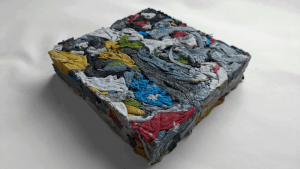Canadian composer Andrew Staniland is known for “electroacoustic music,” combining the instrumentation of classical music with digital sounds and effects. But, Staniland had found that performing using current digital interfaces left him and his audiences unsatisfied. Teaming up with Scott Stevenson, Staniland set out to create an instrument that could provide the new-age appeal of digital sounds and the expressive musicality of an acoustic instrument.
“I found that I was at a disadvantage making music electronically, because while I was doing a lot of things on stage like the other musicians, there was no visible cause-and-effect between my actions and the sound,” says Staniland .
Staniland and Stevenson set out to create a performance instrument for electronic music. Their first prototype, Arc was a success and four more prototypes and a number of performances later, Mune was born.
Unlike a traditional DJ controller, the Mune can be held by the performer to face the audience, making the musicians interactions with sound visible. The built-in wireless technology allows the musician to step far away from their laptop.
The Mune connects to user’s laptop through an expanding variety of apps. The Mune also includes an expansion port to allow the connection of future onboard sound processing modules. Like any traditional controller, it can be used to control virtually any audio software.
The Mune’s designers have recently launched a crowdfunding campaign to fund the next phase of commercial expansion. In the future, Mune will be driven by the community, the Commune. The Commune will also offer a simple platform for software developers to share new apps they’ve created with Mune musicians.







